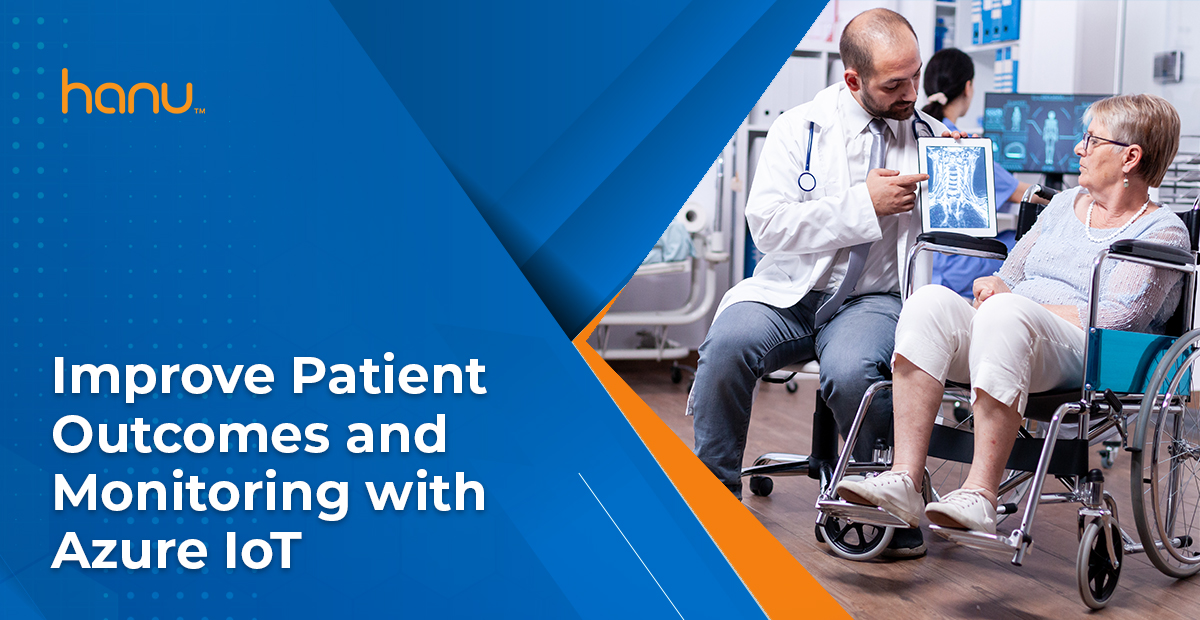
A healthcare provider’s ability to run their organization efficiently is dependent on intensive monitoring of patients and their conditions. Collected data must be correct, accurate, and available at all times in order to make sound decisions that will improve the care of patients. Improper data and monitoring leads to medical errors, which was listed as the third leading cause of death in the USA, after heart disease and cancer[i]. Medication errors are the most common type of error reported and can be reduced with the appropriate tools in place[i].
With the advent of Azure IoT technology, hospitals can now deploy small, affordable devices that monitor vital signs and transmit data back to a central hub for analysis with results displayed on monitors and devices, all in real-time. These devices can also be configured with alerts by setting alarms for when certain readings exceed or drop below thresholds specified by the hospital’s staff. The result is greatly improved patient outcomes because medical staff are alerted immediately if anything goes wrong with their care plan.
Why the need for IoT technology is becoming critical for hospitals and healthcare clinics
It is estimated that over 41 million people die each year globally as a result of non-communicable diseases (NCDs) and in the United States, 85% of total deaths are a result of NCDs yearly[i]. This number will continue to grow with the increasing population size and the global prevalence of ailments such as diabetes, cancer, heart disease, and respiratory conditions. With a few exceptions, these chronic illnesses require long-term treatment for successful outcomes.
However, to maintain compliance with their treatment plan, patients must be monitored regularly by healthcare providers or family members. This can be difficult because many chronically ill patients have mobility issues that hinder them from travelling for exams and treatments; they might also live in remote areas, which only makes travelling more difficult. Patients can also have neurological conditions, like dementia or Alzheimer’s disease, that prevents them from remembering to take medications as directed by their healthcare providers. Many patients also struggle to accurately self-report their health status, making it difficult for medical staff to assess their progress throughout their treatment program.
Fortunately, solutions that use Azure IoT offer monitoring systems that track patient symptoms and help patients receive timely care. With Azure IoT, healthcare providers can gather data from the bedside and send it directly to the cloud for analysis. This can be used to log patient vitals like respiratory rate, heartbeat, or temperature. These data points can be monitored in real-time using IoT solutions that are integrated with web apps and mobile devices, for example, phones and tablets. Patient outcomes can be improved by allowing for diagnosis with more accuracy and speed, identification of non-adherence concerns before they become a problem, as well as overall rating systems to communicate with staff about performance.
A typical IoT remote monitoring solution consists of several components:
- Historical data collection
- Real-time streaming analytics
- Real-time analytics result processing and display via web dashboards/apps
- Sensors connected to IoT
- Azure cloud services to store patient data
- Predictions using machine learning algorithms in Azure Machine Learning
- Alerts/notifications that can be managed by Azure Service Bus
Azure Machine Learning with IoT for patient-oriented predictive analysis
Azure Machine Learning predictions are deployed with IoT to improve the accuracy of remote patient monitoring, in addition to using historical data for the analysis. This service allows hospitals to build and train ML models without having any expertise in data science or statistics. It also takes care of the infrastructure required at scale like computing power, storage, and security.
For example, if the IoT solution is needed to monitor heartbeat levels and predict when an alarm should be raised, Azure Machine Learning can be used to create an IoT low-cost solution that provides more accurate results than existing methods deployed today.
Challenges facing the implementation of an IoT-based healthcare system
Implementing patient monitoring with Azure IoT can be an intensive procedure. The design of an IoT system must take into consideration both the technical and non-technical aspects, such as security, privacy, cost management, and regulatory compliance. Some common obstacles include lack of diversity in the types of wireless connections and difficulty acquiring wireless communication bandwidth from hospitals to internet providers. Additionally, the cost of deployment and maintenance for the sensors and centralized computing systems will need to be budgeted.
In closing
Hospitals should consider a long-term strategy that entails planning for future technology improvements to meet and exceed end user expectations. With Azure IoT, data can be collected from patients in real time, providing more accurate diagnoses and treatment plans.
Modern healthcare will always be in flux, but the change Azure IoT can bring to hospital operations is positive and very much needed. With proper planning for implementation from an IT standpoint, this system can work within any institution’s existing structure without interruption or changes.



